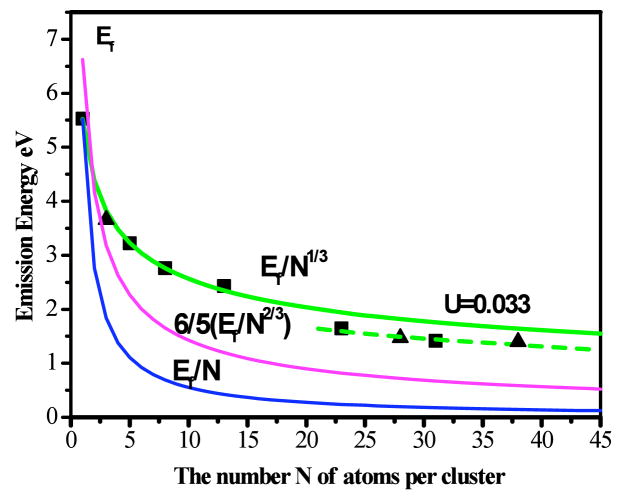Figure 4.
Correlation of the number of atoms, N, per cluster with emission energy. Emission energy decreases with increasing number of atoms. The correlation of emission energy with N is quantitatively fit with Efermi/N1/3, as predicted by the jellium model (1, 2). When N is equal to 1, the energy of valence electron is equal to Fermi energy because the valence electron is at the HOMO level. Emission energies of Au23 and Au31 exhibit slight deviations from the Efermi/N1/3 scaling. Consistent with the narrow excitation and emission spectra, the potential confining the free electrons flattens slightly for Au23 and Au31, with anharmonicity parameter U=0.033 (42). The experimental values for the emission energies of Au3 (82), Au28 (9)and Au38 (71) are 3.66, 1.55, and 1.44 eV respectively (represented by ▲), which are all consistent with the observed scaling relations. Kubo’s predicted model Ef/N (12) and the square potential box model (6/5Ef/N2/3 (1) are also shown in the figure. Obviously these models can not accurately fit the emission energy scalings of the gold clusters.

